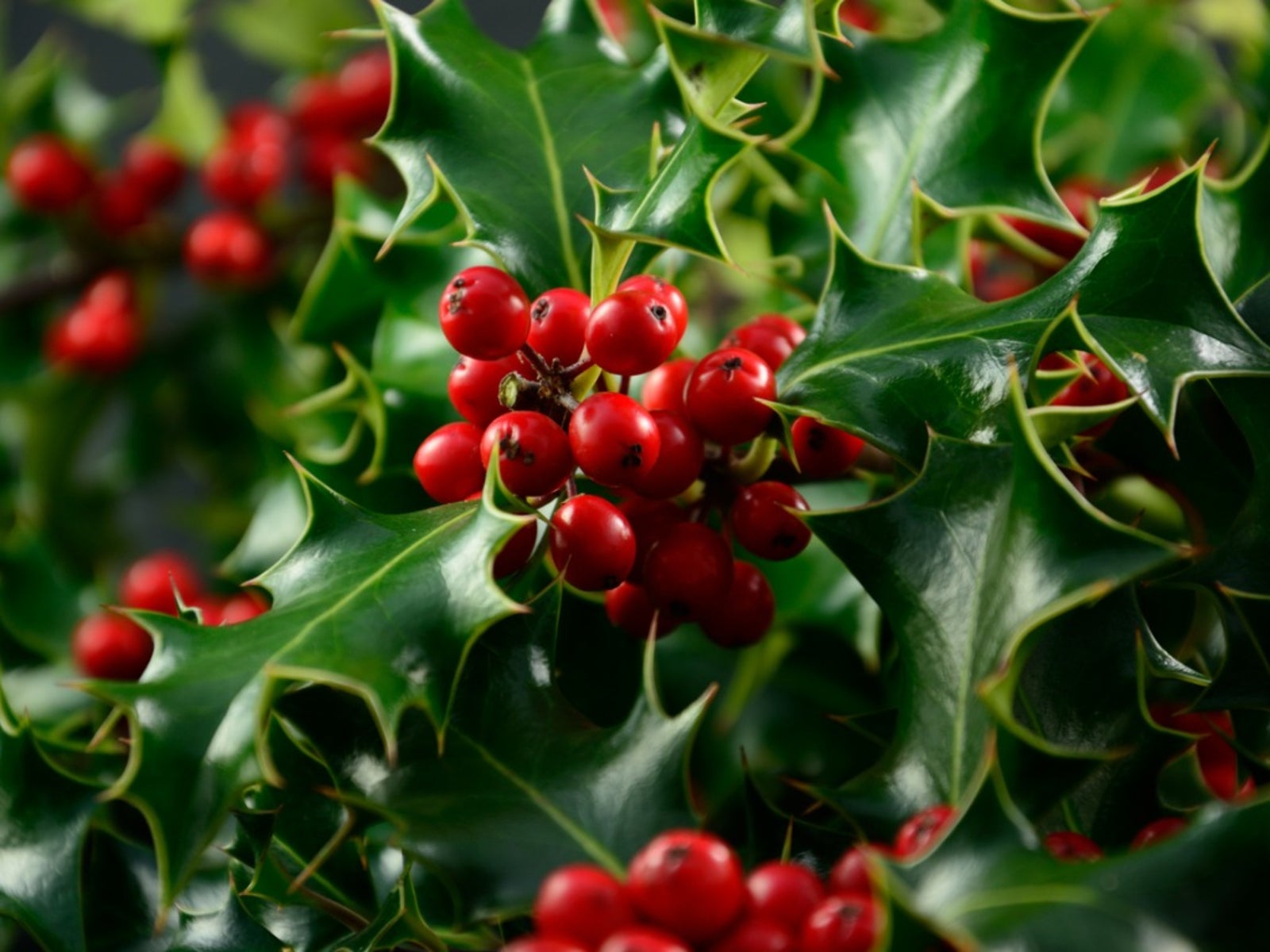Growing holly trees from seed can be a rewarding and fascinating process. With some patience and the right techniques, you can grow your own holly trees from the seeds found inside the berries. In this comprehensive guide, I’ll explain everything you need to know about collecting, preparing, and sowing holly seeds so you can enjoy growing these versatile evergreen trees.
Why Grow Holly From Seed
There are several benefits to growing holly trees from seed rather than buying young nursery-grown saplings
- It’s much more affordable – holly seeds are free if you can collect them yourself or inexpensive to buy Young holly trees can cost $15-30 each from garden centers.
- You get greater variety – growing from seed allows you to end up with different holly varieties rather than just what your local store has available.
- It’s fun and educational for kids or gardeners of any age. Watching seeds sprout and tend seedlings as they grow is always exciting
- You can grow specific holly species – find an outstanding holly specimen in your neighborhood and collect berries to grow more plants just like it.
When to Collect Holly Berries
Holly berries ripen in late fall and early winter, anytime from November to February depending on your climate. The best time to collect berries for seed is after the first frost when they have turned from green to bright red or orange. Pick only from disease-free plants.
Choose plump, fully ripe berries. Under-ripe green berries won’t contain viable seeds. Overripe berries may have seeds that have already germinated inside and won’t store well. Collect more than you need since germination rates are generally low.
Extracting and Storing Holly Seeds
Holly seeds are contained within the juicy berries along with some inhibitors to prevent premature sprouting. Seeds must be cleaned and dried properly for storage.
Rinse fresh berries and remove any stems or leaves. Mash berries in a plastic bowl to separate the pulp from the seeds. Add water and swirl to allow emptied seeds to sink to the bottom. Drain off the pulp and repeat the rinsing until only clean seeds remain.
Spread rinsed seeds on paper towels and allow to dry completely, about 1-2 weeks. Store dried holly seeds in an airtight container in the refrigerator. Kept cool and dry, holly seeds remain viable for 1-2 years before sowing.
Stratifying Holly Seeds for Better Germination
Like many tree species, holly seeds have built-in dormancy mechanisms that prevent premature sprouting in fall before winter cold has passed. This ensures seedlings don’t emerge too early and get damaged by harsh weather.
To break dormancy and improve germination rates, holly seeds require a period of cold moist stratification before sowing. This mimics winter conditions and the natural cycle seeds go through when still inside ripened berries on the tree.
To stratify seeds, mix with equal parts damp sand, peat moss, or vermiculite. Place this seed mixture in a plastic bag or container and store in the refrigerator for 10-15 weeks. Check periodically and remoisten if needed to keep the medium damp but not saturated.
How to Sow Stratified Holly Seeds
Your stratified holly seeds are now ready to be sown in late winter or early spring as soon as frost danger has passed in your area.
Fill containers with a sterile, well-draining seed starting mix. Shallow flats, cell packs, or small individual pots work well. Moisten the soil before sowing.
Plant 2-3 seeds in each container just below the soil surface. Cover lightly with 1/4 inch more mix and water gently to settle.
Place containers in a bright spot with temperatures around 65-70°F. Bottom heat of 70-75°F will encourage faster germination.
Cover trays with plastic film or glass to maintain humidity levels. Remove any coverings once seeds begin to sprout.
Caring for Holly Seedlings
Germination is slow and erratic, but can occur anytime from 4-18 months after spring sowing. Be patient, keep seeds moist but not soaked, and protect from intense sun until sprouts emerge.
Water young seedlings carefully as needed to keep soil barely moist. Begin fertilizing lightly with a diluted liquid houseplant fertilizer once true leaves form.
When seedlings have 4-6 mature leaves, transplant into individual containers. Use a potting mix formulated for acid-loving plants like holly.
Grow on in pots for 1-2 years before transplanting holly seedlings into their permanent garden locations once they are 2-3 feet tall.
Tips for Success Growing Holly From Seeds
Follow these tips to get the best results from your holly seed propagation efforts:
- Collect very ripe berries and extract seeds carefully to maximize viability.
- Clean and completely dry seeds after removing berry pulp.
- Stratify cooled seeds for 10-15 weeks before sowing in spring.
- Use sterile seed starting mix and containers to prevent fungal issues.
- Maintain warm, humid conditions until seeds sprout.
- Allow 1-2 years for slow germination – don’t discard unsprouted seeds too soon.
- Transplant seedlings to larger pots once they are established.
- Be patient – it may take 2-3 years before seedlings are ready to be planted outdoors.
Growing beautiful holly trees from seeds requires time and diligence. Follow these steps carefully, and you’ll soon enjoy decorative evergreen holly specimens grown sustainably from seed.

How to propagate holly
Hollies can be grown from seed. Collect seed from the berries in December, January and February. Remove the flesh of the berries and rinse the small seeds. Then plant them into compost and leave to germinate outdoors.
You can also take cuttings when the trees are almost fully grown in August and September, when you do formative pruning, or you can take cuttings of hardwood trees in the winter.
Hollies are robust and relatively trouble free. However, they can be affected by holly leaf blight. This is a fungal infection of the leaves caused by Phytophthora ilicis. The leaves and stems turn different colors and the plants lose their leaves. It requires cool, damp conditions to flourish and is believed to have come from North America. It has become a bigger problem in the last ten years, and records show that these types are more likely to have it: aquifolium, Ilex crenata, I. × altaclarensis, I. dipyrena and I. kingiana, I. colchica, I. pernyi var. veitchii and some clones of I. apaca. There isn’t a cure yet, but if you see blotchy leaves, cut out the infected part and burn the pieces to stop the disease from spreading.
Holly leaf miner is a small fly with larvae that feeds inside holly leaves and makes spots and patches. It doesn’t harm the plant overall, but looks unsightly. The best method of treatment is removing the affected leaves by hand and destroying them.
How to Collect American Holly tree Seeds (Germination tips)
FAQ
Is holly hard to grow?
Do holly seeds need cold stratification?
How to grow holly from seed indoors?
How long does it take to grow Holly from seed?
Growing holly from seed requires patience. It can take several years for the seed to even germinate, and the same again once growing to reach a stage where they will flower and produce berries.
How do you grow holly berries?
Gather seeds from a healthy, mature holly shrub in late summer or early autumn. Collect berries and place them in a bucket filled with water. Soak the berries for 48 hours, or until the flesh of the berries softens and begins to disintegrate. Crush the berries by hand and remove the tiny, light-brown seeds.
Can you grow Holly from seeds?
Both holly and ivy are woody plants with glossy green leaves and red berries. Propagating holly from seeds indoors can be difficult, since these can take many years to germinate.
- The Ultimate Guide to Growing Strawberries in Raised Beds - August 8, 2025
- No-Dig Garden Beds: The Easiest Way to Grow a Beautiful Garden - August 6, 2025
- How to Protect and Preserve Wood for Raised Garden Beds - August 6, 2025
